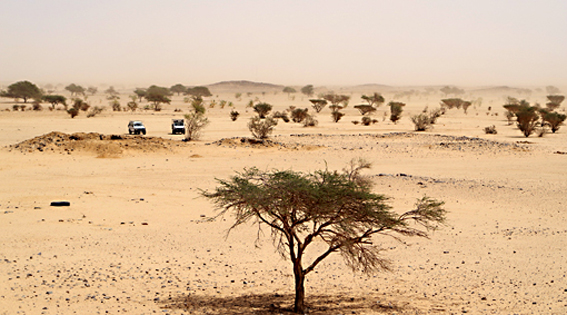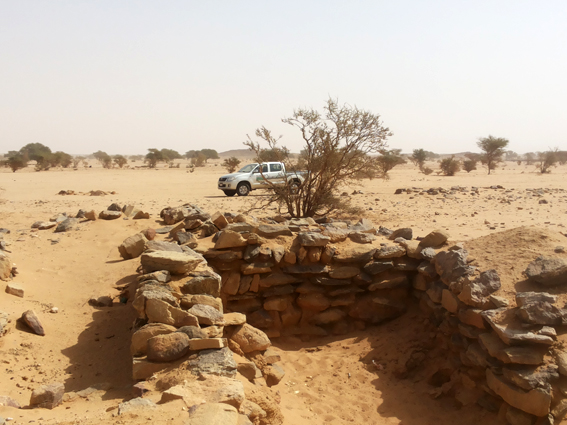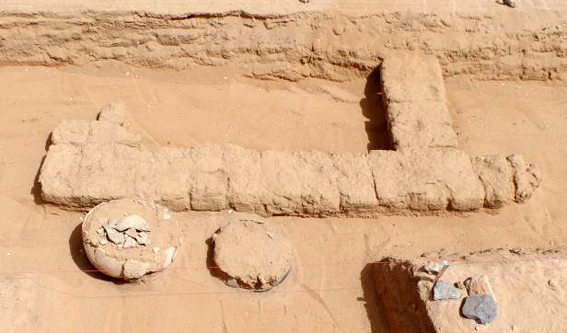The building complex of El Tuweina was excavated during the field campaigns in 2017, 2018, and 2019.
The structure of El Tuweina is located in mid-Wadi Abu Dom and thus in an entirely different topographical situation. The three structures in the ruins of El Tuweina are clearly distinguished from each other; for now, they are designated simply Object 1 (remains of low walls), Object 2 (the mound with middle range walls), and Object 3 (a second mound with higher walls).

The visible remains of Object 1 suggest a walled enclosure, perhaps with a rectangular plan ca. 33 by 33m. Inside there are remains of installations, some built up against the wall and others freestanding in the courtyard. During the excavations (see season 2017 and season 2018) several mudbrick walls were discovered which hint to a more complex groundplan.
Object 2 is defined by a small mound oval in shape, but the wall to the west has been entirely destroyed by bulldozing. The building might have once been a residential building and belongs to a second building phase.
Object 3 is defined by higher walls, surrounding elongated rooms, as well as a (secondary) northern apartment with smaller rooms. The elongated rooms were accessible from the eastern side; at present, no windows to the outside were documented.



